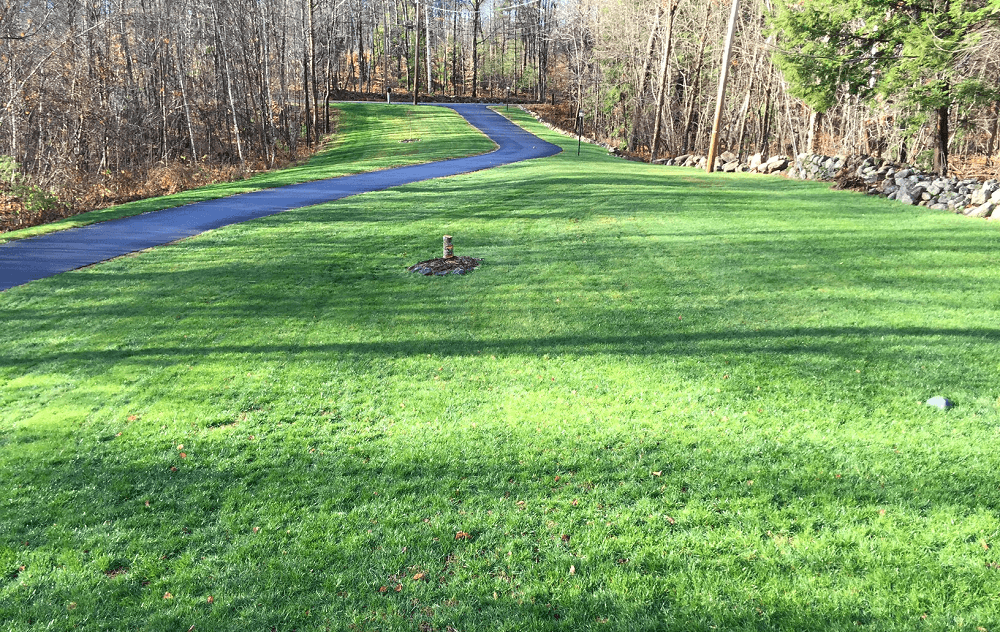In order to understand why fall lawn care treatments are so beneficial, you first have to understand how grass grows each autumn. After a hot, dry summer turf grass repairs itself in the fall by undergoing substantial root growth, as compared to top (leaf) growth in the spring. Fall is the time to store up energy for a long, cold winter.
Seeding
Autumn also means the end to annual broadleaf weeds and crabgrass. Less competition for space, water, and light combined with warm soil/air temperatures makes seeding your lawn in the fall the most opportune time for the greatest results. Seeding a new lawn or simply making repairs is about as simple and organic as it can get.
Different grasses should be planted in the right spot to insure long-term success. Sandy, dry soil calls for drought-tolerant type grass. And while it seems obvious, shady areas of your lawn should have grass types specifically suited for shade! Planting the wrong grass in the wrong spot simply does not make sense and wastes money.
Fertilization
Fall is not only the best time to help your lawn recover from summer, but to also prepare it for next spring. How can you help your lawn? Fertilize once or twice this fall, depending upon your location and the grass varieties present. Too much fertilizer can lead to succulent leaves that are more prone to damage from cold winter weather compared to a lawn that is not overly fertilized. In contrast, too little fertilization, in combination with a yellow lawn, indicates poor health and predisposes your lawn to ice or traffic damage while dormant.
Lime
If you have not limed your lawn or don’t know the soil pH, have it tested or look for acid-indicator weeds (hawkweed or wild strawberry for example) that prefer a more acidic soil and therefore generally means the need for lime. Lime takes more time to break down than fertilizer, so if you want to get the soil adjusted, it’s best to do it now rather than waiting for spring.
Compost Tea
If your soil is weak or low in organic matter, compost tea can add some zest to your sterile or unhealthy soil environment. Adding organic matter and micro-organisms makes for a healthier soil that promotes healthier grass roots. Spring and fall are both great times to apply compost tea to your lawn.
Aeration and Overseeding
Core aeration is another fundamental fall treatment to help reduce compaction and opens the door to overseeding (adding improved grasses to your lawn after core aeration). Overseeding is not designed to install a lawn, but rather add new grasses to an existing lawn that might be perfectly healthy or has a few thin spots. With or without overseeding, aeration is a super way to get oxygen, moisture, and nutrients into the soil. Soil compaction is one of the most common turf problems that most people do not recognize and the process is chemical free!
With fall right around the corner, it may be time to put up your beach chairs but not your lawn mower.

Organic Fall Lawn Care
Tags:
aeration
, chippers
, Fertilizer
, Lime
, lawn repair
, seeding
, overseeding
, upper valley lawn care
, nh lawn care
, vt lawn care
, compost tea

